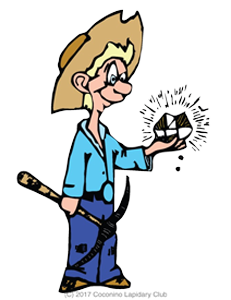Having greatly enjoyed writing my last blogs on garnets as gemstones and mineral specimens, topics different from my long-time interests in the ore-forming minerals, I am starting a series of blogs in the same vein on the precious gems: diamonds, emeralds, rubies, and sapphires.
In the first three blogs the topic is diamonds. In this first blog, I will describe some famous diamonds and their histories, and follow up with a gallery of diamond jewelry and diamond-decorated art objects from over the years. In the second blog I will briefly discuss the crystal structure of diamonds, which underlies their physical and optical properties, including their brilliance and colors, and how diamonds are formed deep within the earth’s mantle and then ejected to the surface. In the third blog I’ll end the series on diamonds with a photo gallery of natural uncut diamond specimens, emphasizing varieties of crystal forms and colors.
THE BEAUTY AND ALLURE OF DIAMONDS
Not only do diamond gemstones display a remarkable sparkling brilliance, their colored varieties, perhaps unexpectedly, span the spectrum of the rainbow (Figure 1). These properties underlie their being esteemed over the years by collectors and wearers of these gems. Diamond’s beauty and early rarity due to limited sources, along with their aura of great wealth and power, underlay their being worn as crown jewels, being set as the gemstones of royals and glitterati, and being set in jewelry, which are also art objects. Some famous gemstones and other art objects are described below.

The Koh-i-noor Diamond [Ref 1]
The rough stone was mined in the alluvial sands in the Golconda, the ancient diamond-mining region of India [Ref 2]. Its name is Persian for “Mountain of light”, attesting to its brilliance. Prior to entering the written record, it was shown in 1628 as being set at the top of the gem-laden throne of the Mughal ruler Shah Jahan (Figure 1) [Ref 3].

Following its possession by Mughals, it was taken from India in 1739 by the Persian ruler Nadar Shah among the spoils of war. The gem remained in what is now Afghanistan until, after decades of fighting, it was returned to India by the Sikh ruler Ranjit Singh in 1813. After Singh’s death in 1839 the gem passed from ruler to ruler before being possessed by a boy, Duleep Singh and his mother, Rani Jindin. Following her imprisonment by the British, who, as the British East India Company, expanded into central India, ten-year old Duleep was forced to give away the Koh-i-noor and his claim to sovereignty. From there the diamond came into the possession of Queen Victoria after it was recut to enhance its brilliance (Figure 3) [Ref 4]. It was set in a brooch, (Figure 4) [Ref 5], and became part of the British Crown Jewels [Ref 6]. After resetting, the diamond now resides at the front of the crown of the Queen Mother, mother of Queen Elizabeth II (Figure 5).


The Cullinan Diamond [Ref 7]
More recently found than the Koh-i-noor, the Cullinan diamond (Figure 6) was found in 1905 at the, (then called), Premier Mine in Johannesburg, South Africa. At 3106 carets (1.371 lbs.) it was the largest rough diamond ever found, until the discovery of a 1109 caret diamond in Botswana. Cutting it provided seven gemstones (Figure 7) including the Cullinan I and Cullinan II diamonds. These were set respectively in the Sovereign’s Scepter (Figure 8) and in the Imperial State Crown (Figure 9), both among the British Crown Jewels.


The Hope Diamond [Ref 11]
Reportedly cursed, after being stolen from the eye of a holy Hindu statue, the original 115.16 ct stone was likely purchased by Jean-Baptiste Tavener, a diamond merchant, from the Kollur Mine in Golcanda, India and sold in 1668 to King Louis XIV of France, and became known as the “French Blue”. It was recut to a 67 ct gem by the court jeweler [Ref 11]. During the French Revolution the French Blue was stolen. Later the stone changed hands and went to Henry Phillip Hope. It is now famously known as the Hope Diamond. After a series of purchases, it was donated to the Smithsonian Institution in 1958 where it resides today. After its acquisition by the museum the weight of the stone was determined to be 45.52 carats. Its intense blue color is seen in Figure 10.

The Orlov Diamond [Ref 12].
The rough diamond ancestor of the Orlov Diamond was mined in the Kolliur Mine in the Golcanda region of India [Ref 12] and weighed 787 carats. Following it’s residence as an eye of a deity, in a temple on the island of Srirangam, in South India, it made its way to Amsterdam, and around 1768 was sold to Count Grigoryevich Orlov, a Russian nobleman and officer who helped Catherine the Great overthrow Peter III and gain the throne of Russia. Catherine had the diamond mounted on the Imperial Scepter (Figure 11). The diamond has a non-traditional shape, resembling half of a bird’s egg. It is a white diamond [Ref 13] with a bluish-green tint and weighs 189 cts.
The Tiffany Yellow Diamond [Ref 14]
This rough diamond, weighing 287 cts, is the largest yellow diamond ever mined. Purchased by Charles Lewis Tiffany, founder of Tiffany & Co., in 1877. It was fashioned into a cushion-cut brilliant, weighing 128 cts. The gemstone was fashioned into a diamond necklace (Figure 12) and worn by Audrey Hepburn in promotional photos for the film Breakfast at Tiffanys. Later the gemstone was mounted to create the whimsical “Bird on a Rock” brooch (Figure 13). The stone was reset into a diamond and platinum necklace in 2012 to commemorate the 175thanniversary of Tiffany & Co.

Gallery of Diamond Jewelry as Art Objects












